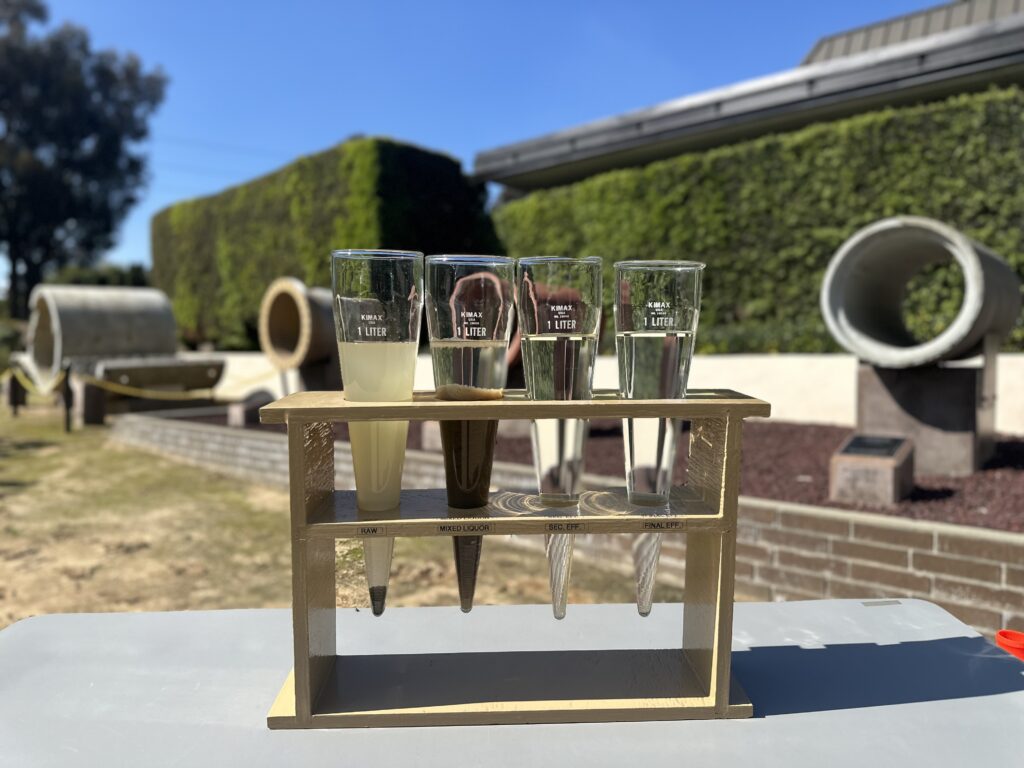California Relies on Recycled Water
Across the state of California, millions of gallons of water are being recycled per day. We recently had the opportunity to tour the Los Angeles County Sanitation Department (LACSD) and learn about the process of recycling water and its impact on our state. LACSD alone serves 5.5 million people and recycles 150 million gallons per day. Clean water is critical to our state’s infrastructure and our environment.
For the past 60 years, LACSD has recycled more water than anyone else in the country. When they utilize this recycled water, they create their own energy, reducing the need to pump as much water from other regions of the state—reducing greenhouse gas production and less pollution in the air.
What Happens to the Recycled Water
Did you know that nearly two-thirds of the water LACSD recycles goes to our soil to recharge the groundwater or sent to over 900 local reuse sites? Businesses and industries rely on recycled water as a more affordable and dependable source of water, allowing them to keep their business operating in Southern California. Recycling water aids in an overall, healthier economic climate.
We All Play a Part
Everyday behaviors—flushing the toilet, doing laundry, showering—impact the water being sent to sanitation departments and the infrastructure necessary to recycle our water. As wastewater comes into the sanitation departments, it is contaminated with solid materials, bacteria and viruses that need to go through a rigorous process to be removed. LACSD has over 14 miles of tanks that move the wastewater through a physical, chemical and biological process. When items that should not be in our water make it to the wastewater plants, it increases the risk of damage and breakdown of the pipes and treatment tanks. Within 10-12 hours, the wastewater is processed into recycled water.
When it comes to flushing your toilets, do you know what should or should not be flushed? We help to provide businesses with consumer education materials that align with the California State law that requires the “Do Not Flush” symbol to be used on products that should not make their way down the toilet. Items like non-flushable wipes, paper towels and feminine hygiene products are the top non-flushable items resulting from poor flushing behaviors.
It is critically important that businesses use the “Do Not Flush” symbol on packaging so that consumers can learn and change behaviors when flushing the toilet. The sanitation departments across the state benefit from the reduction of non-flushable items remaining out of the wastewater and being discarded correctly.
Do your part to look for the “Do Not Flush” symbol on non-flushable wipes packaging (baby wipes, cleaning wipes and makeup removal wipes) and read the disposal instructions. Approximately 90% of the wipes sold in the U.S. are not meant for flushing. When in doubt, throw the wipe in the trash. We can all #FlushSmart—as our recycled water depends on it.
About Responsible Flushing Alliance
The Responsible Flushing Alliance (RFA) is a 501(c)(6) non-profit organization dedicated to consumer education focused on what not to flush. RFA’s goal is to change consumer behavior to help reduce damage to our nation’s sewage systems caused by objects and materials not designed to be flushed.
